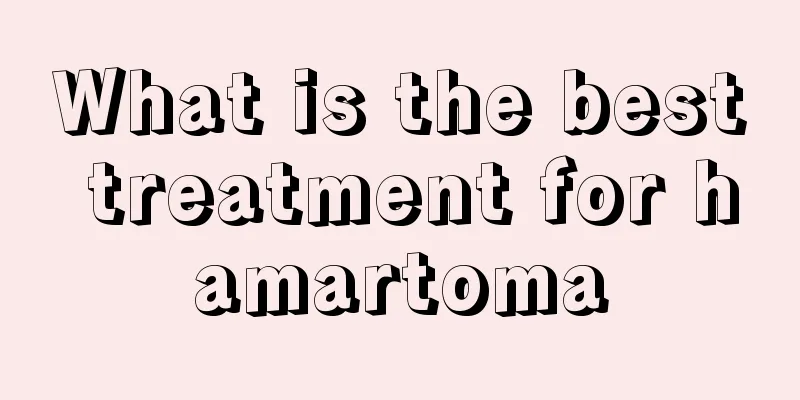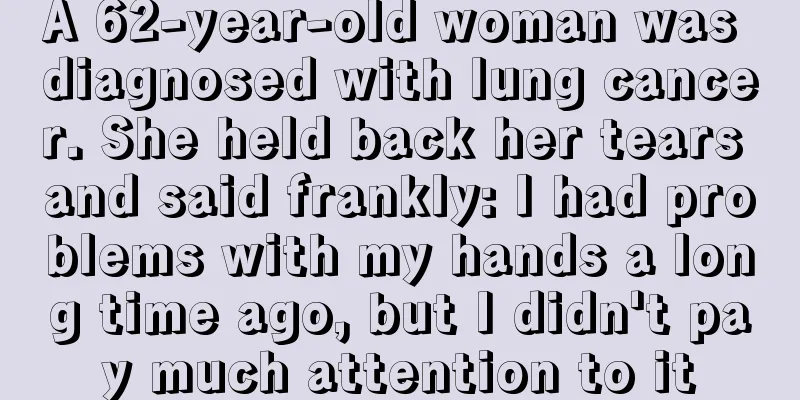What is the best treatment for hamartoma

|
Everyone is familiar with the term hamartoma. Its incidence is getting higher and higher, which is very harmful to our body and seriously affects our life. The treatment of hamartoma has become a concern for everyone. Let me introduce to you the best treatment for hamartoma: Hamartoma is a substantial space-occupying lesion, a type of lipoma, composed of thick-walled blood vessels, smooth muscle and mature adipose tissue, and can occur singly or multiple times. Usually, B-ultrasound and CT examinations have a high positioning and qualitative diagnosis rate for hamartoma. Although hamartoma is benign, it also needs surgical resection. Only the pathological diagnosis after surgery is accurate. Although it does not metastasize in the near future, it may turn into cancer and is constantly destroying normal organ tissues. Having an extra abnormal thing in the body is also a psychological burden, so surgery is necessary. Renal hamartoma, also known as renal angiomyolipoma, is a benign tumor composed of abnormally proliferating blood vessels, smooth muscles and adipose tissue in different proportions. The disease can occur not only in the kidneys, but also in the brain, eyes, heart, lungs, bones and other parts. The disease is very harmful to the patient's body, so it needs to be treated as soon as possible after diagnosis. What should I do if I have a hamartoma? 1. Observation: Oesterling believed that tumors <4 cm can be left untreated, but close follow-up is required. Johns Hopkins reported a group of 35 cases, some of which did not continue to grow for many years. Steiner advocated that patients <4 cm should be followed up once a year even if they are asymptomatic; patients >4 cm should be followed up once every six months if they are asymptomatic or have mild symptoms. 2. Embolization: Arterial embolization should first be considered in cases of bleeding. According to experience, the volume of the tumor does not decrease after embolization, but the bleeding can be stopped. Superselective renal artery branch embolization is often used to protect some renal function. 3. Nephron-sparing surgery: Tumors <5cm can be enucleated, especially those at the edge of the kidney. However, some tumors have unclear capsules, irregular shapes, and unclear interfaces, making enucleation unsafe. In this case, partial nephrectomy can be performed. 4. Surgical treatment: The procedure of preserving renal tissue, which we call partial nephrectomy, can not only completely remove the tumor, but also preserve renal tissue and protect renal function to the maximum extent. It has a very good long-term effect and is very meaningful for the treatment of renal hamartoma (including cases of partial rupture and bleeding). Partial nephrectomy is divided into open surgery and laparoscopic surgery. According to the current medical level, laparoscopic surgery is recommended as the first choice. It not only has less trauma and completely removes the tumor, but also can retain pathology to confirm the nature of the tumor. In recent years, laparoscopic surgery has gradually become the preferred method for the treatment of renal hamartoma with its unique advantages such as less trauma, fast wound healing, short hospitalization time, less bleeding and beautiful incision. 5. Kidney transplantation or hemodialysis: Only applicable to patients who must undergo bilateral nephrectomy due to bilateral lesions leading to renal failure or tumor rupture and bleeding. 6. Interventional embolization: Generally speaking, interventional embolization is simple and safe, but some scholars believe that this treatment is not thorough and cannot guarantee complete blockage of the blood supply to the hamartoma, so there is a possibility of secondary embolization or conversion to surgical treatment. However, it is a good first aid method for ruptured bleeding. Unilateral renal angiolipoma is a benign lesion with a good prognosis. For patients with bilateral or multiple lesions and renal insufficiency, their quality of life will still be affected despite conservative treatment. For a few cases where multiple organs are invaded, such as lymph nodes, brain, heart, or even tumor thrombi invade blood vessels, the prognosis depends on the condition of the invaded organs. |
<<: What is the TCM treatment method for hamartoma
>>: What method is suitable for treating hamartoma
Recommend
How to prevent computer radiation, experts introduce several methods to prevent computer radiation
Now every household has a computer. Whether at wo...
TCM Syndrome Differentiation and Treatment of Pancreatic Cancer
Pancreatic cancer is often classified as "ac...
What is the reason for a child to have a fever, feel dizzy and vomit?
Children are very prone to diseases due to their ...
How to prevent liver cancer? Four most effective ways to prevent liver cancer
The development of liver cancer is unimaginable f...
How to wash off asphalt from shoes
Asphalt is often used on some roads. So if we are...
What is a low fever? Common knowledge you must know
Cold is a very common disease, and fever is often...
How is lung cancer generally treated? These methods are the most effective in treating lung cancer
As more and more people are suffering from lung c...
Topical medication for skin cancer
Skin cancer patients can try some topical medicat...
What are the hazards of brain cancer
The most common hazard of brain tumors is headach...
The correct way to brush your teeth with braces
Straight and white teeth make our smile look more...
How should fear be treated
Everyone's mental quality is different, so wh...
How to use Candlewood Leaves to nourish hair and what is the effect
In addition to its medicinal effects, the leaves ...
What to eat to relieve sore throat and pain when swallowing saliva
Generally, sore throats are more likely to occur ...
What are the ways to reduce thigh fat through exercise
Especially for some office workers, who sit for l...
How much does glioma surgery cost approximately
In life, many patients will consider many issues ...









